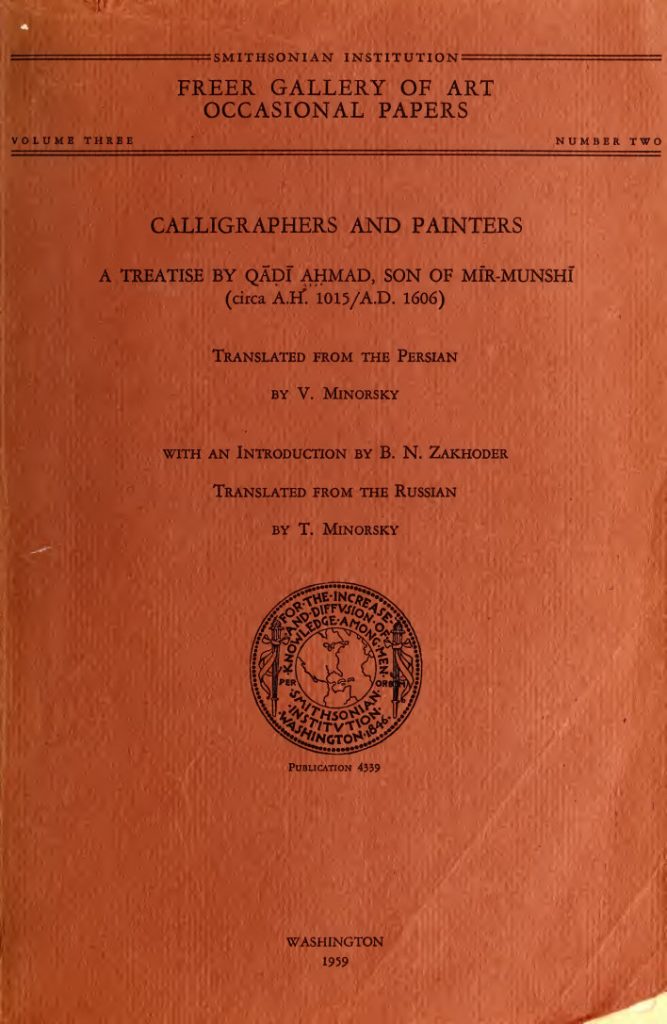| Title: | Calligraphers and Painters: A Treatise by Qādī Ahmad, Son of Mir-Munshī, circa A.H. 1015/A.D. 1606 |
|---|---|
| Author List: | Vladimir Minorsky (trans.) |
| Publisher: | Freer Gallery of Art, Smithsonian Institution |
| Publication Date: | 1959 |
| Publication Type: | book |
| Format: | print (softcover) |
| Pages: | 223 |
| Collection Area(s): | Arts of the Islamic World |
Calligraphers and Painters: A Treatise by Qādī Ahmad, Son of Mir-Munshī, circa A.H. 1015/A.D. 1606


Description:
The Rose Garden of Art—as Gulistan-i Hunar translates from the Persian—was composed by Qādī Ahmad in Iran around 1600. It consists of hundreds of succinct “entries” on artists, mainly calligraphers, in a literary genre called tazkira, or biographical compendium. Four versions of the Gulistan-i Hunar, dated between 1596 and 1606, are known. Each introduces variations, an indication that Qādī Ahmad spent a great deal of time editing and refining his work. The text seemed to sink into oblivion until the 1920s, when it was rediscovered not in Iran but in Russia. Moscow’s Museum of Oriental Cultures owns what was then thought to be a rare, if not unique, copy. Iranist Boris N. Zakhoder wrote an article about the Gulistan-i Hunar in 1935, and twelve years later, in 1947, he published a full translation of the manuscript in Russian. Another decade passed before Vladimir F. Minorsky’s 1959 translation into English was published, titled Calligraphers and Painters. This translation shed new light on the arts of pre-modern Iran and prompted fresh directions of research into the topic.

